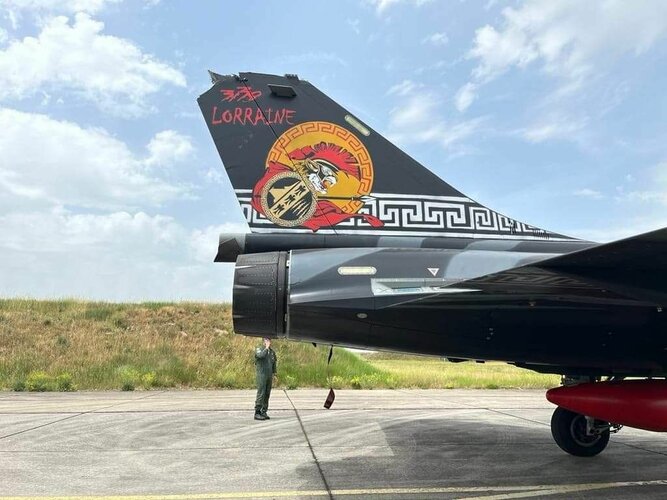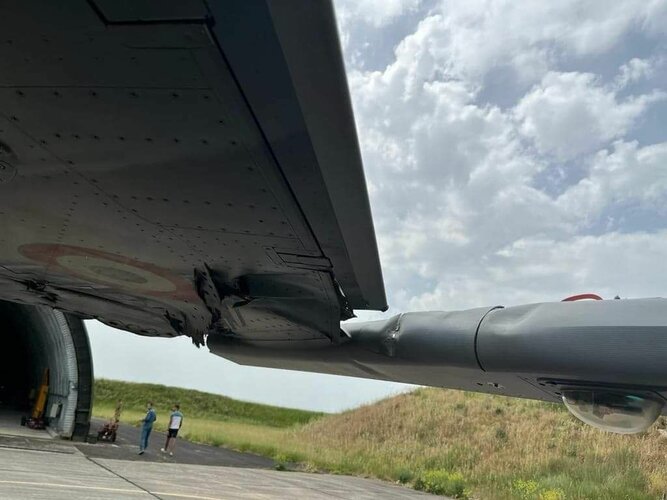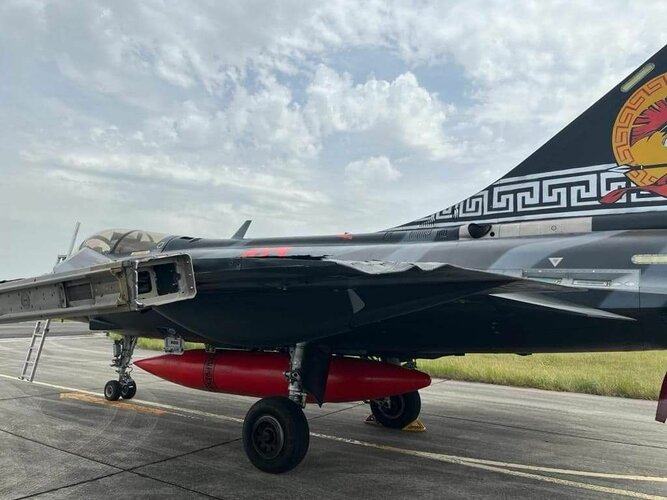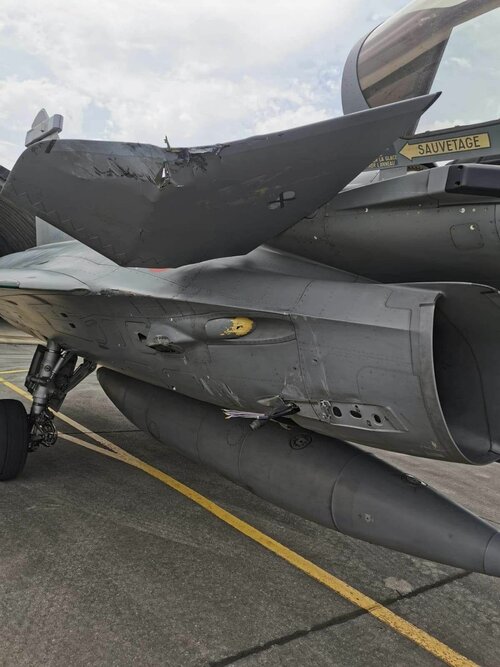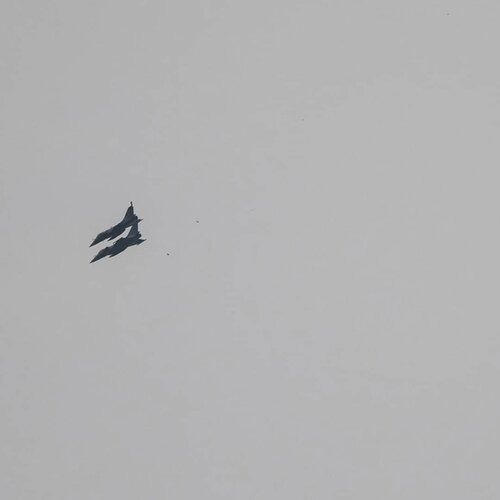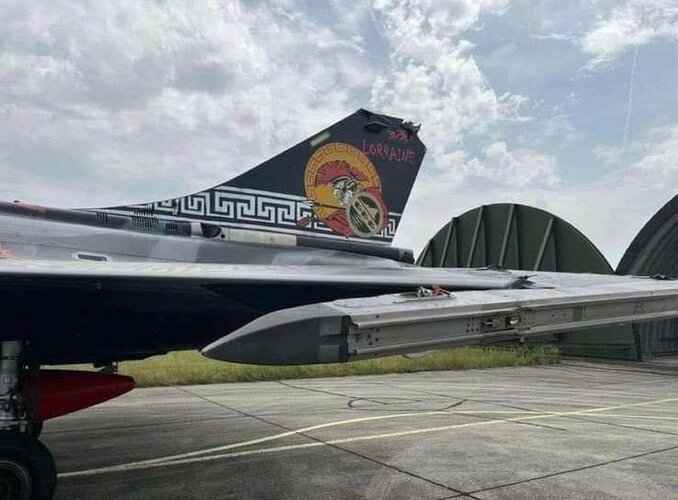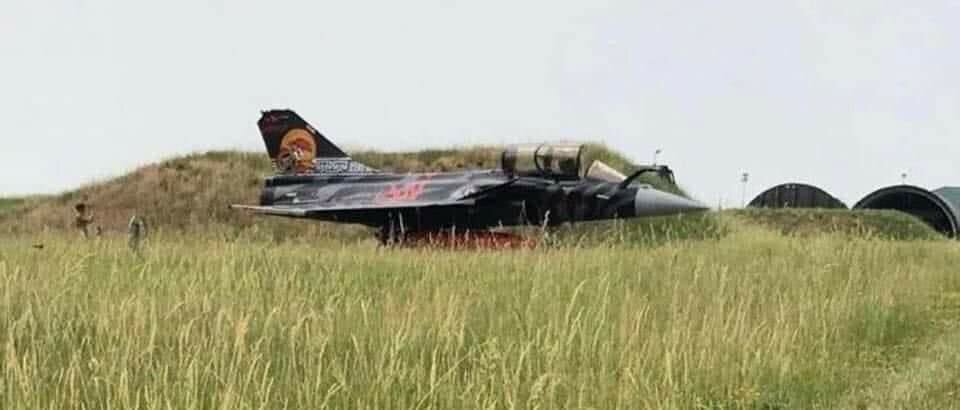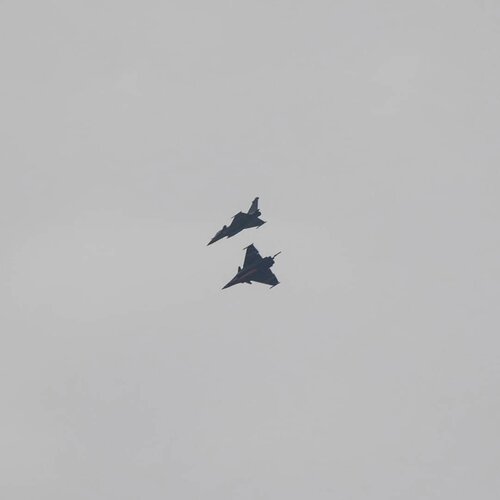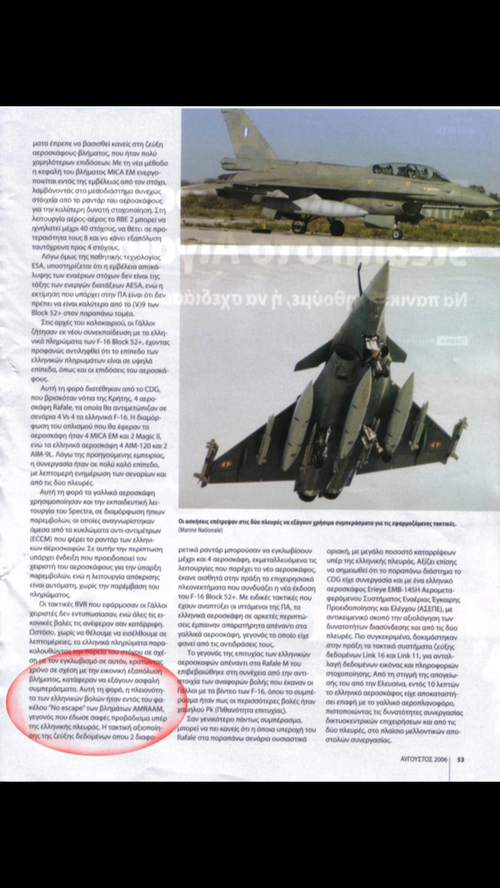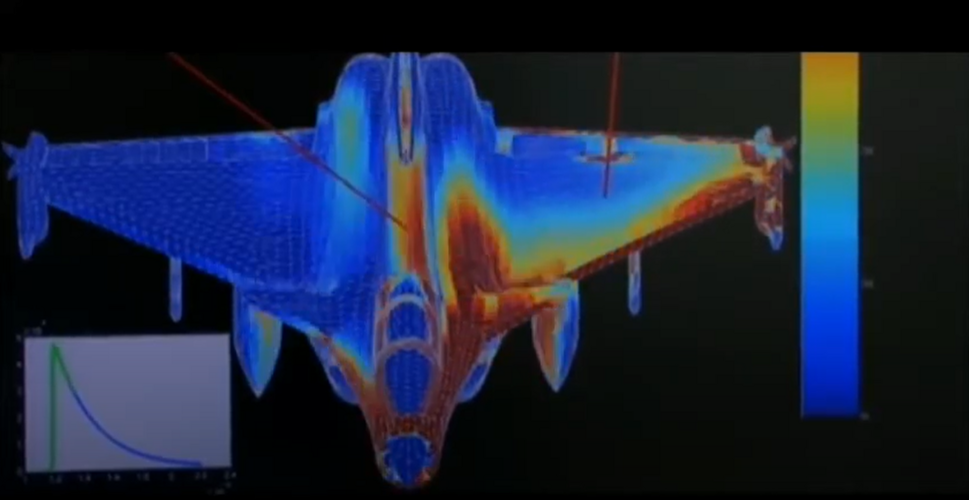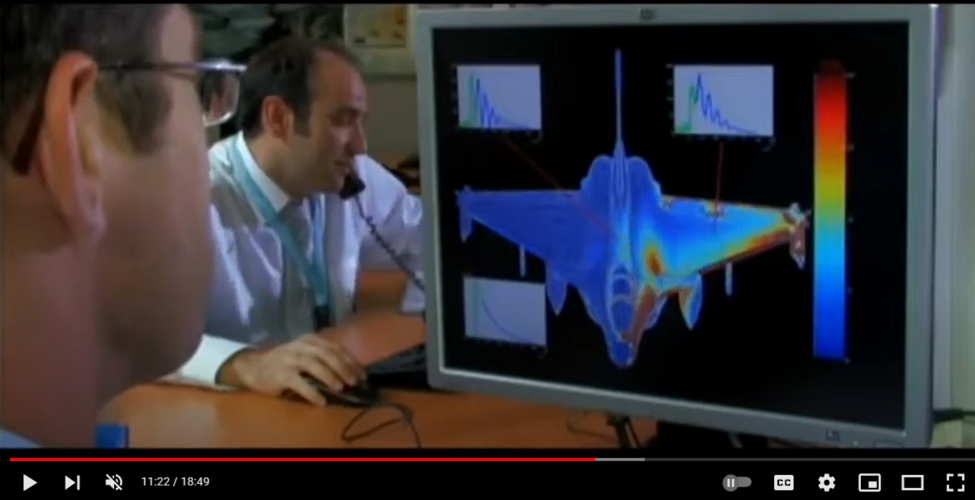On the 4vs4 encounter between CdG Rafale and F16 B52+.
This time the french aircrafts also used the trainning function of Spectra, in mild jamming mode, which were immediately detected from the greek aircrafts ECCM, which reply automatically with no pilot input.
The BVR tactics used by the French didn't impress, while they reported all virtual shots as kills.But without wanting to go into detail, observing the route of the target in relation with the lock on it, keeping time (counting) in relation with the virtual launch, the greek pilots managed to arrive to safe conclusions. This time, the majority of the greek shots were inside the "no escape" envelope of AMRAAM, which gave clear advantage to the greek side. The tactic of using data link, where 2 different radars could lock onto 4 aircrafts, taking advantage of the function that the new aircraft gives, made obvious in practice the advantages of the new F16 version. With special tactics planned by our pilots, in quite some cases, they were approaching unobserved opposite to the french aircrafts, a fact that was shown by their reactions.
The success of the greek aircrafts against the Rafale M was afterwards confirmed by comparing the shot reports of the French with the F16 videos, where it was shown that most shots were of low Pk (kill probability).
As a general conclusion, one may say that any Rafale's superiority, in the above scenarios, is marginal, with high kill percentage for the greek side. Also it should be noted that in that period of time, the CdG was cooperating with a greek EMB-145H Erieye with the aim to evaluate the interoperability of the 2 sides. More in detail Link 11 and Link 16 were tested. From the time of take-off from Elefsis airfield, within 10 minutes the greek aircraft had established contact with the french carrier, certifying capability of cooperation in network-centered operations for both sides.
Aegean Gust.
4 Rafale F2 B, 1 Rafale F2 C.
The recent excercise wasn't the first occasion for a HAF squadron to counter the Rafale. In 2006 the Rafale M from CdG partecipated in excercises with F16block52+ and F4E AUP. But the Rafale M of the time, were F1, a version centered in air-to-air role with somewhat limited capabilities. In the Aegean Gust partecipated Rafale F2, with improved air to air capabilities, including the data link between aircrafts of a formation, combined with FSO and data fusion...
... Both greek and french pilots flew as backseaters in each other planes. As for the engagements:
4 sorties occured in the morning and 3 in the evening of Tuesday in 2 vs 2 scenarios, in BVR. The greek aircrafts were B52+. On Wednesday 8 sorties with Rafale B in 2 waves (morning, evening), with the partecipation of 1 french pilot and 4 greek backseaters. This time it was 4 vs 4. The greek aircrafts were B52+, B50D, B30.
Something that appeared strange to the greek pilots, was that while according to the HAF policy the pilots were doing the last pre-takeoff check of their planes (Leak check), the French pilots were taking position on the runway without doing so.
The impressions of the greek pilots were variable, as is natural , and their observations quite interesting. The whole of the greek F16 pilots, found the cockpit particularly functional, although a bit small, as is used in all french aircrafts. Also, the best impressions left the glass cockpit advanced disposition. It is known that the high operational output of the Rafale is result of high performance, excellent behaviour and friendly MMI that adopts to the high workload in multirole missions. The existance of so many displays and the characteristical absense of analog instruments, was natural to make a big impression to the greek pilots, who apart the Falcon's MFDs, are used to analog instruments. Some in fact, told us that they would feel more comfortable, if some analog instruments have been kept as backups in cases of malfunction or failiure of the electric system. Of course it is certain that safety valves has been thought, while evolution indicates that full glass cockpit will dominate in the future, as will happen in the case of F35 too.
It is also natural to be impressed by the high situation awareness provided by the Rafale thanks to data fusion. The Rafale, as the greek pilots had the chance to see, can receive tracking data from RBE2, Spectra, OSF, IFF, MICA IR sensors and accompanying aircrafts, ground command and control facilities and AWACS, elaborate them and produce system tracking data (system tracks). These are superior to quality compared to the single data of the individual sensors. This data is then used for fire control and is shown in the central tactical display and can be transmitted to fellow aircrafts. So, at a glance at the tactical display, the pilots can see the position of targets that may be inside the radar cone or outside and even in the rear hemisphere, no matter if the radar is on or off!
Also, it was verified that OSF provides advantage in air combat. As the greek pilots observed, once the target is locked from the radar, its image is then displayed in the central display which facilitates very much the target identification even in great distances.A similar function is provided in the F16 by the Lantirn Pod in air to air mode, with the difference that the backseater can make a search independent of the radar. On the contrary on the Rafale, the OSF is primarily slaved on the radar.
The best of impressions left to the greek pilots the performace of the Rafale's self protection suite, confirming the french reputation in the sector since the time that HAF operated the ICMS2000 in the Mirage2000.
Small reprimands were made to some small but important details, like the fact of the abscense of a countdown timer in the HUD when a BVR missile is flying towards its target. The greek F16 pilots are used to such an indicator on the lower left of the HUD, indicating the "Time On Target" of the Amraam and the time remaining until the Amraam's autonomous seeker is activated. If the missile fails tracking, then the indication "Loose" appears over the locked target on the HUD and the pilot is aware that the shot has failed. Something like this wasn't found on the Rafale, leading to a difficulty in the interpretation of the BVR shots during the engagements. And this, because the French were regarding that after a certain range , a MICA shot was always successful. As a result, the arrival to safe conclusions, was problematic.
Beyond that, it was also commented positively the agility of the Rafale. Of course the greek pilots still think of the F16 as a particularly capable aircraft in dogfight.
In the air, the Rafale is very agile, but for the greek pilots the sense of flying was very different from that of the F16. It was commented as perfectly stable, with very good response in all speeds and manouvers. Very good impressions were also left by the automatic pilot as well as the ability of maintaining very low speed during approach, prior to landing.
... The Rafale certainly proved that it is a very capable aircraft in the hands of the excellently trainned french pilots who have battle experience. The encounter with F16s, gave the greek pilots the opportunity to measure the F16 capabilities against a 4th gen aircraft, while it showed yet another time that the level of HAF pilots is one of the best in NATO airforces.

 www.theweek.in
www.theweek.in






